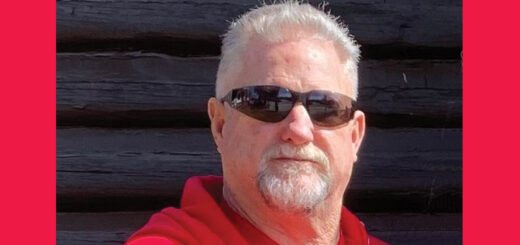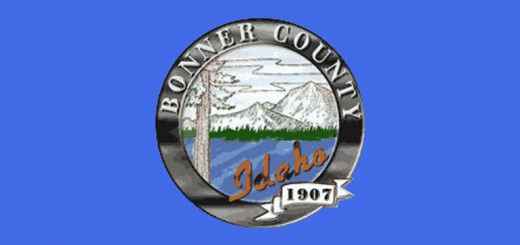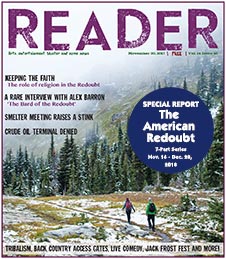Bonner County Ambulance Service District raises user fees
By Soncirey Mitchell
Reader Staff
The Bonner County board of commissioners, which serves as the Ambulance Service District Board, voted April 9 to raise and add fees for emergency services to account for inflation and rising operating costs. The 15% increase is the first since 2020 and marks an essential step toward financial independence for the district, which is separating from the county after years of improperly operating as a department.
“We’re in the process of continuing to create a legal separation between the Bonner County Ambulance Service District — otherwise known as Bonner County EMS — and the county itself because when it was formed, legally, it was supposed to be its own separate taxing district and autonomous from the county,” said Commissioner Brian Domke, speaking at the April 12 “MAGA Meetup” at the Sagle Senior Center.
“At the end of the day, what’s important, legally, is that the ambulance district needs to be financially autonomous as its own taxing district. It needs to be able to show what all its income and costs are associated with,” he later added.
According to Ambulance District Chief Jeff Lindsey, the district’s emergency call volume has risen 20% since 2020 without the corresponding fee and tax increases to support operations. The new rates will raise prices by 15%, meaning residents will pay $18.40 per mile for an ambulance ride and $889 for Advanced Life Support emergent care, among other services. ALS emergent care is a higher level of medical response — specific to life-threatening emergencies — in contrast to Basic Life Support.
On the urging of BOCC Chair Asia Williams, the district will also charge higher rates for out-of-county residents, meaning visitors will pay $2 extra per mile and $200 more for standard fees. This, in part, will account for the increased EMS use in the summer due to the influx of tourists to Bonner County.
At the April 9 public hearing, Williams called the 15% increase “an educated guess on how to move the pay structure at this time” based on research into “more than 10 ambulance districts.” Until the board can fully extricate the ambulance district from the county and monitor its expenses, the commissioners stated they do not have enough data to calculate exact operating costs, but estimated that the data should become available within the year.
Lindsey and Williams emphasized that raising user fees will not directly translate into profits, as many bills will go partially paid or unpaid altogether. The district currently has a collection rate of 55%, which Lindsey said is “pretty standard.” From November 2023 to October 2024, the district received $1,477,841 of the $2,689,586 billed out. The missing 45% comes from users failing to pay their bills and the Centers for Medicare and Medicaid Services paying only a portion of the costs accumulated by its users.
“The government says how much they’re going to pay us,” said Lindsey, adding that “most of the people” they serve have Medicare or Medicaid because “we live in a more senior community.”
According to Lindsey, because CMS does not have to pay in full, the county’s newly increased rates will primarily affect “commercial carriers” like Blue Cross of Idaho. Williams said that, in the future, the district has “to have a way to not unfairly tax” those with private insurance since their providers have a higher probability of paying bills “at a higher rate.”
There are no plans to propose a levy to cover general operating expenses. Still, Williams argued that it could be necessary in the future as user fees “cannot sustain an ambulance district.” She further argued that if the district increases user fees too much, “you end up actually with less people paying their bill just on the face of it.”
Domke and Commissioner Ron Korn argued that users should bear a more significant financial burden than the general public, with Korn emphasizing that he did not support a levy as “that’s kind of a bad perception in the public’s eyes.”
“The ability to have everything in place to respond to a call is what we, as a tax base in our county, are supporting,” said Domke.
“Any one of us might need to make that call, and then when the call happens, the actual cost to send somebody with equipment — so, personnel and equipment — to make that call and do the full circle, to me, that actual cost is what we should be passing on to the end user as close as possible,” he added.
Williams and Domke agree that there was not enough data to support anything other than the 15% increase at this time, though it likely would not cover the cost of inflation. Korn suggested a 20% increase to avoid raising rates again at the end of the year, which could make the community feel like the district was “nickeling-and-diming” them.
“I’m hopeful that we don’t have to make another big change, but I also can’t just throw a number at residents and say, ‘We need to increase you to 20%,’ without the data for that type of an increase,” said Williams.
“I’m willing to say 15% now and then re-evaluate when we have solidified the structure of the ambulance district and the cost of all of our services that it takes to run the ambulance district under that new structure,” said Domke.
The commissioners voted 2-1 to approve the fee increase, with Korn abstaining.











 Coming up this week! Don’t miss Live Music, the Summer Sampler, the Art Party, Monarch Grind, the Sandpoint Renaissance Faire, and more! See the full list of events in the
Coming up this week! Don’t miss Live Music, the Summer Sampler, the Art Party, Monarch Grind, the Sandpoint Renaissance Faire, and more! See the full list of events in the 